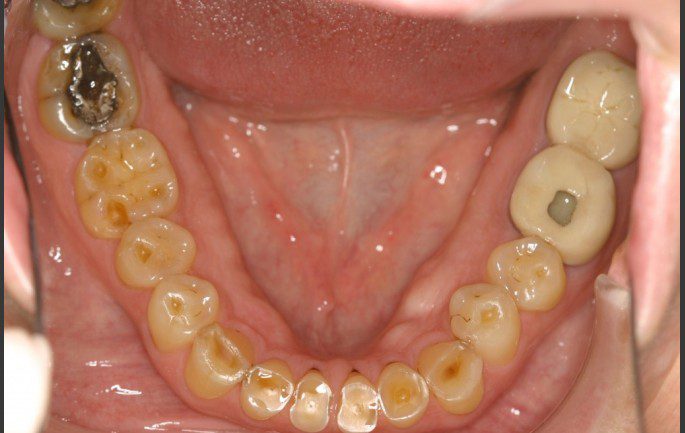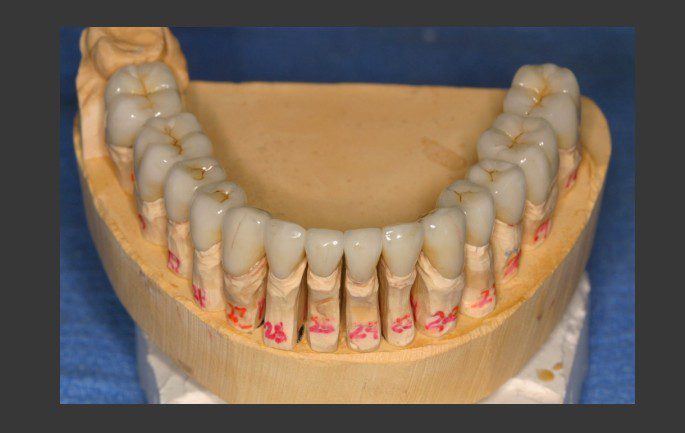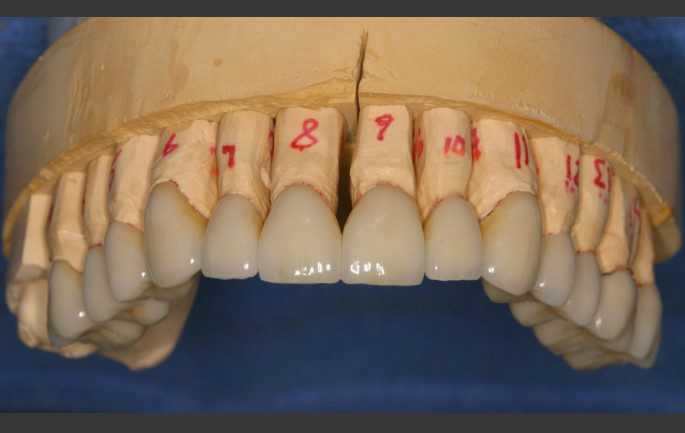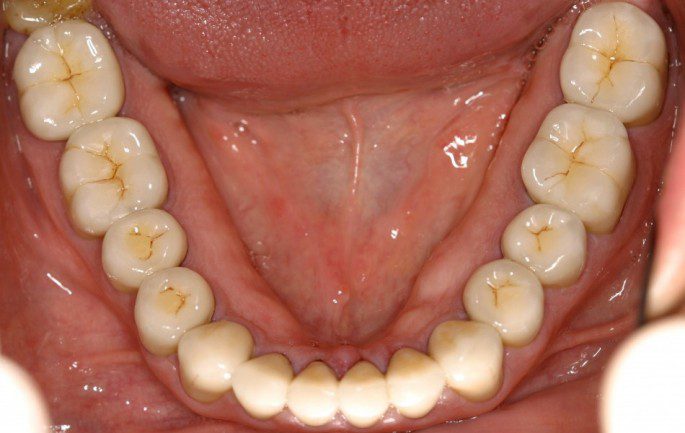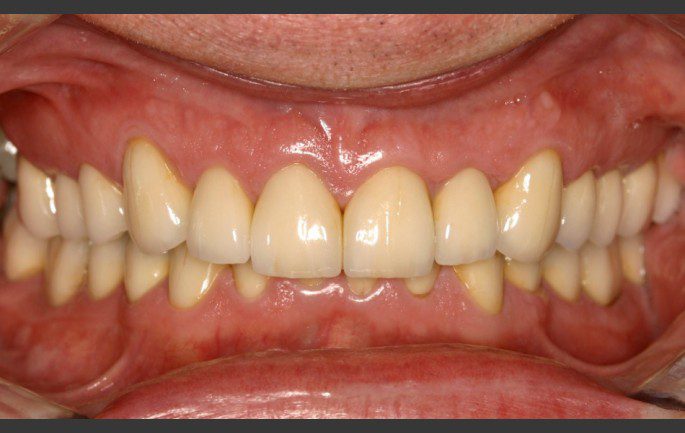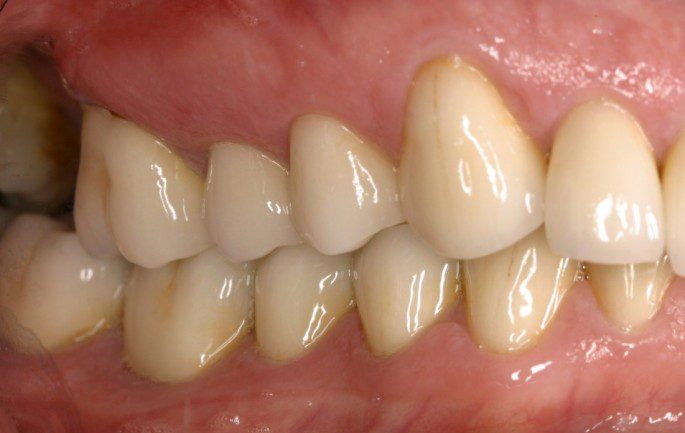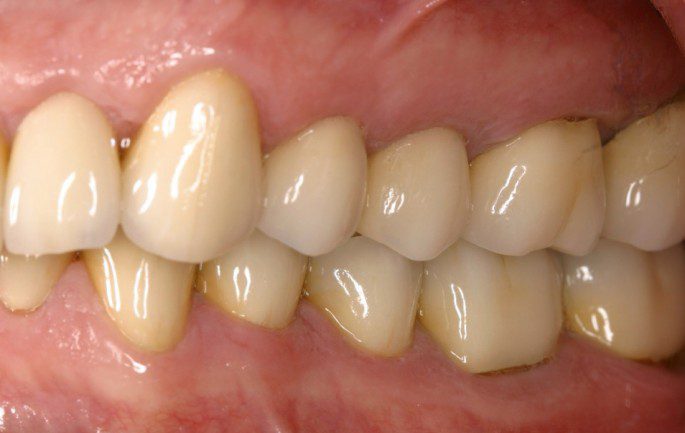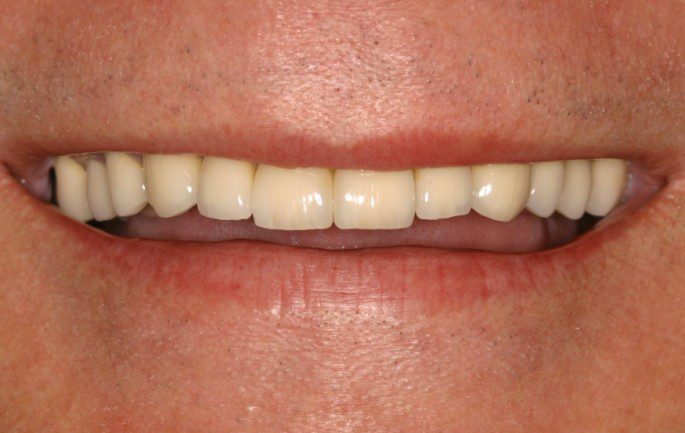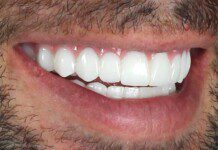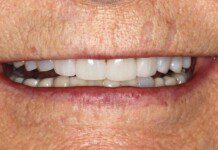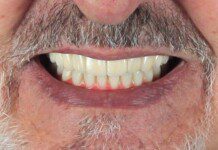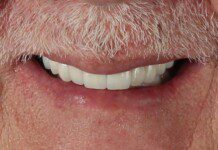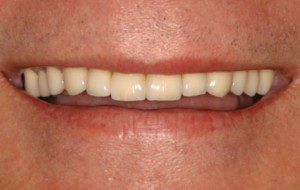
1 of 19
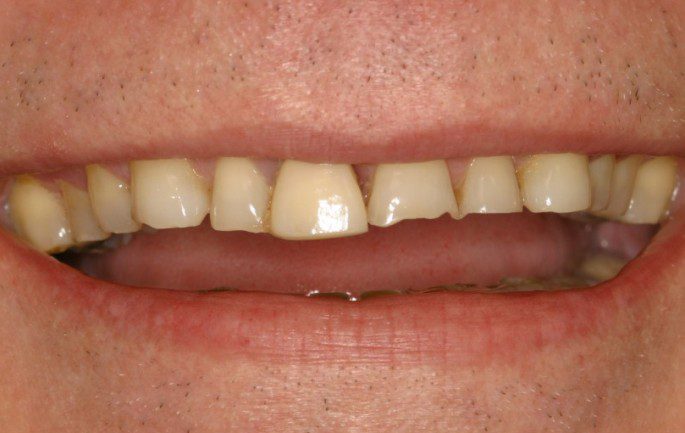
Pre-treatment smile. The crown on the right front tooth was done years earlier. The difference in tooth length between the crown and the natural teeth show what many years of grinding (tooth abrasion) can do. In this case, approximately 2-3 millimeters of wear is evident.
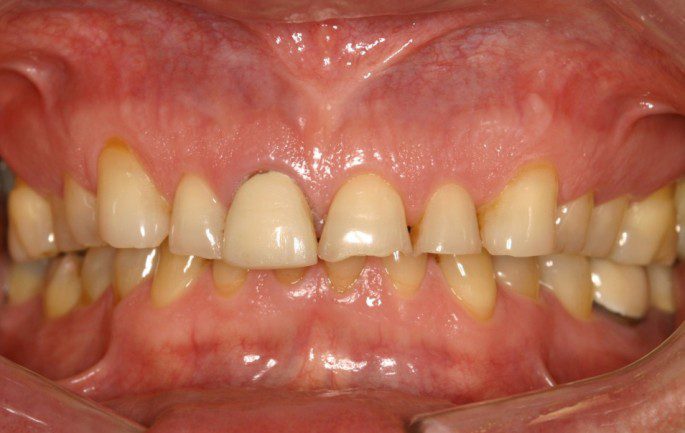
Close-up view of teeth showing more wear. Genetics and stress are the typical cause of dental wear. Most patients do not know they grind their teeth. Because most pathologic wear happens during sleeping hours (nocturnal bruxism) most patients are unaware of the problem. To add to the problem, most people are happily in denial about grinding even in light of overwhelming evidence through pictures. Pictures are a great way to evaluate your smile. If you begin to notice that you don't show as much of your teeth as you did 10-30 years ago, if you have jagged biting edges or you have broken a tooth off...you may well be a grinder.
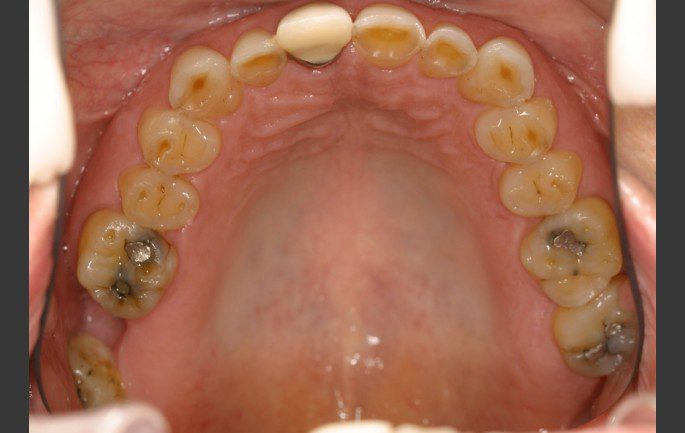
Mirror view of upper teeth. Once a patient wears through the enamel (very hard, dense outer layer of tooth structure) it exposes the much softer, more yellow layer of dentin (seen in this picture and in pictures 5 and 6). Because the dentin layer is so soft it wears at a much faster rate. Usually, enamel wears very slowly (decades) through heavy trauma (grinding, occupational exposure to sand and silicate, bad habits- constant toothpick chewing, using teeth to repeatedly open objects like bobby pins, frequently holding a pipe with the teeth). Dentin, on the other hand, can be worn by simply chewing food.
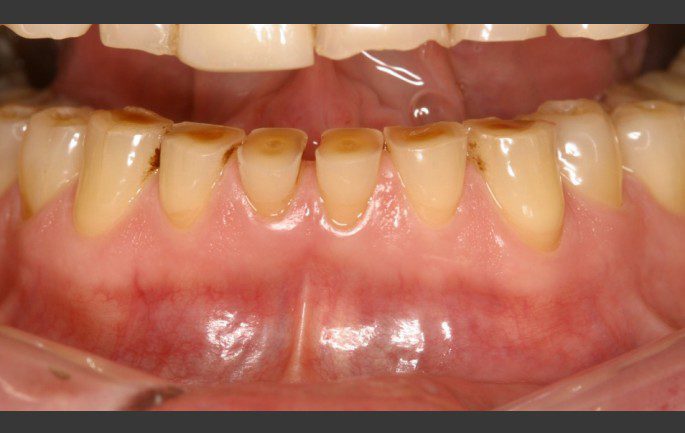
Close-up of lower front teeth. These teeth have been reduced by approximately 50%. Lower front teeth have a thinner layer of dentin thereby causing more accelerated wear than the other teeth.
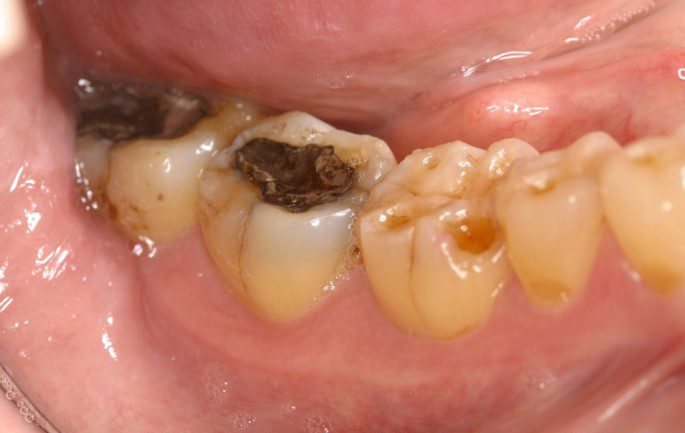
Side view of lower right showing the accelerated after a cusp fracture. Cusp and tooth fractures are very common in grinders. Again, once the enamel layer is gone the brittle edges of the teeth have a very high susceptibility to fracture. Some tooth fractures are manageable and others require extraction and implant replacement.
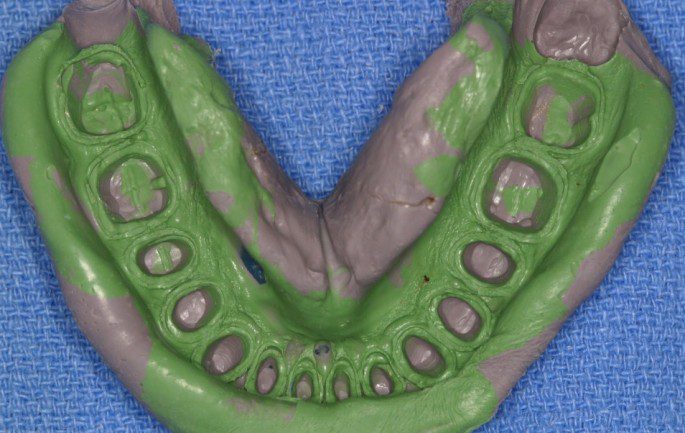
This is what a final impression of crown preparations should look like. Many experts speculate that only about 5-15% of dentists can make a proper impression. This is a very sad reality. A dental impression for crowns and bridges (for teeth) needs to have the entire 360 degree margin captured in the impression material. Anything less than 100% capture of this margin causes the crown or bridge to be "ill fitting" meaning there will be a gap (horizontal or vertical opening between the crown and the tooth). This gap or opening is the REAL REASON that teeth get cavities around crowns or bridges. The dental industry has long convinced the patient that it is the patient's fault when a cavity forms around a restoration. The REALITY is that the restoration almost always causes the cavity when it doesn't fit. Therefore, the most important aspect of the crown or bridge procedure is the final impression.
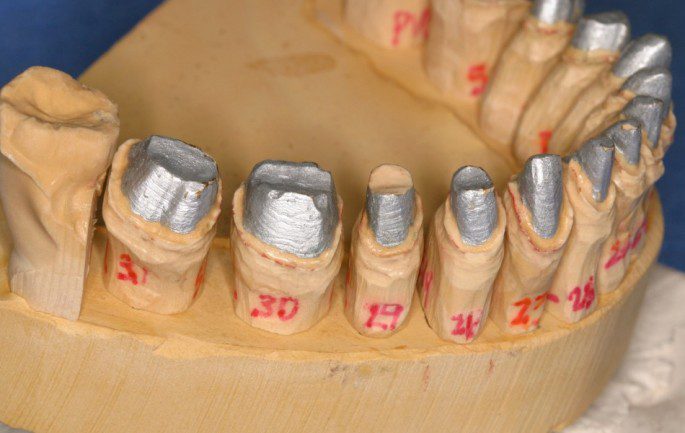
This is the "Master Cast" or the "Working Cast" made of a very accurate stone. This Master Cast is a very close replica of the crown preparations in the patient's mouth. The permanent crowns are made on the Master Cast. It should be very clear to you, after reading #7 that the Master Cast can only be as good as the final impression. Therefore, if the final impression is deficient the Master Cast will be deficient and the permanent crowns will not fit leading to cavities in a short period of time.
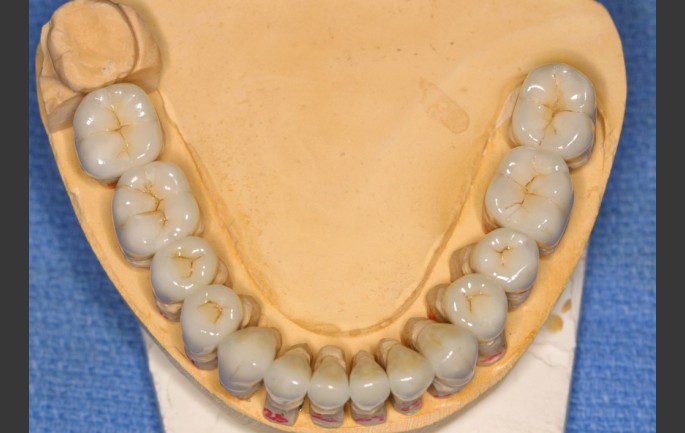
Lower permanent crowns on the Master Cast (top view). Note the detailed natural anatomy of these crowns. Teeth have a specific design for a reason- function and longevity. If we are to give the patient proper chewing and a good chance for long term success, we must mimic nature. Only about 10% of laboratory technicians charge enough to do this level of quality. Again, a sad reality about the dental industry.
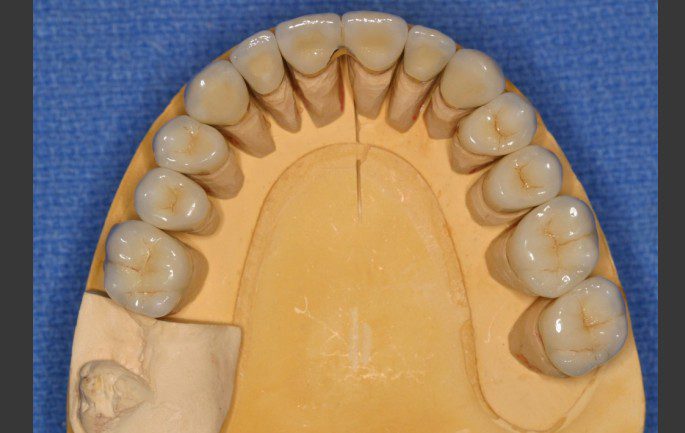
Upper permanent crowns (occlusal view). Again, note the natural anatomy and contours. Author's note: if you review the comments on #s 7-12 you will quickly see that obtaining an outstanding result from the dental community isn't as automatic as it would seem. When one combines the all of the above mentioned pitfalls to getting a great outcome the task of choosing a dentist becomes much more daunting. Choosing a Board Certified Prosthodontist is one of the most effective ways to find a dentist and a laboratory who will produce the high quality outcomes that you are paying for and where you can increase your chances for long term success.
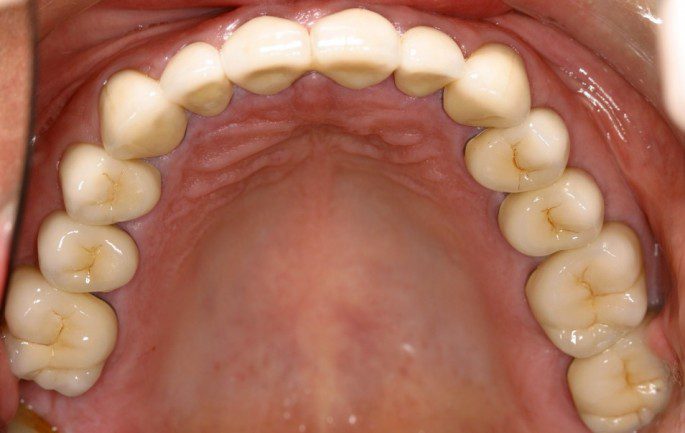
Upper permanent crowns (occlusal view). Again, note the natural anatomy and contours. Author's note: if you review the comments on #s 7-12 you will quickly see that obtaining an outstanding result from the dental community isn't as automatic as it would seem. When one combines the all of the above mentioned pitfalls to getting a great outcome the task of choosing a dentist becomes much more daunting. Choosing a Board Certified Prosthodontist is one of the most effective ways to find a dentist and a laboratory who will produce the high quality outcomes that you are paying for and where you can increase your chances for long term success.
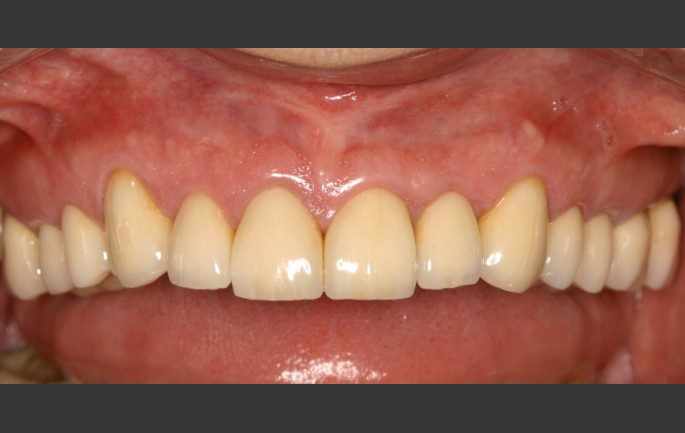
Close up view of upper crowns. Note, the breathtaking natural character and contours. Teeth should not look like piano keys. Each tooth has its own basic size, shape and position. Each tooth needs to stand on its own from an appearance standpoint. Teeth should NOT be simply different sizes of the same general tooth.

